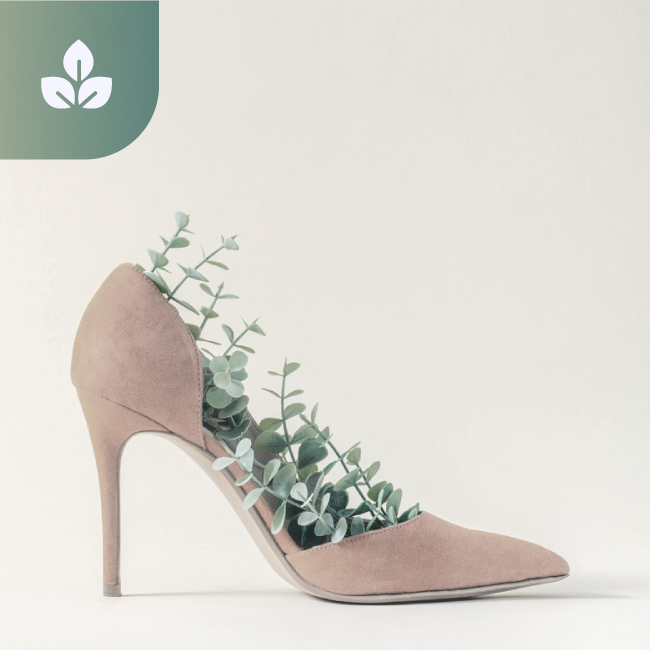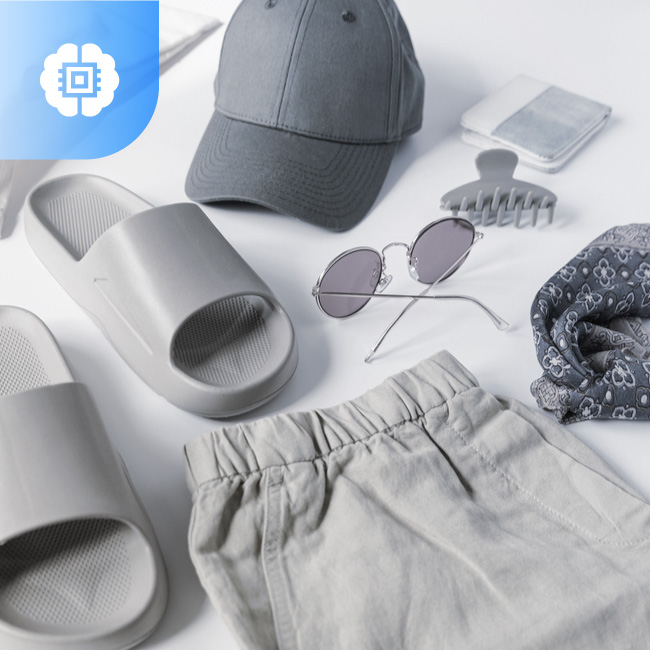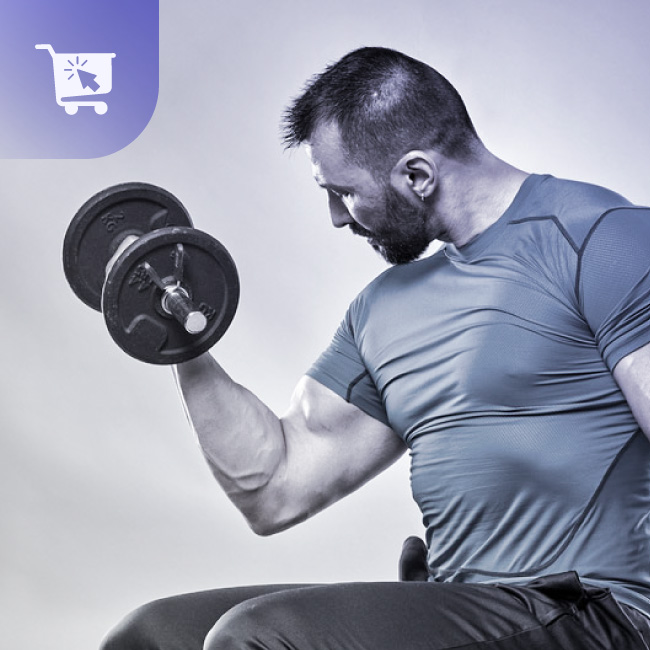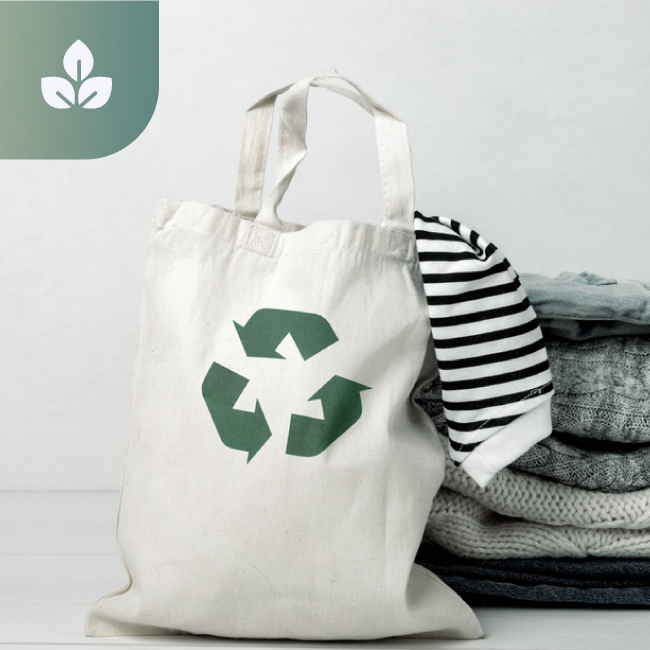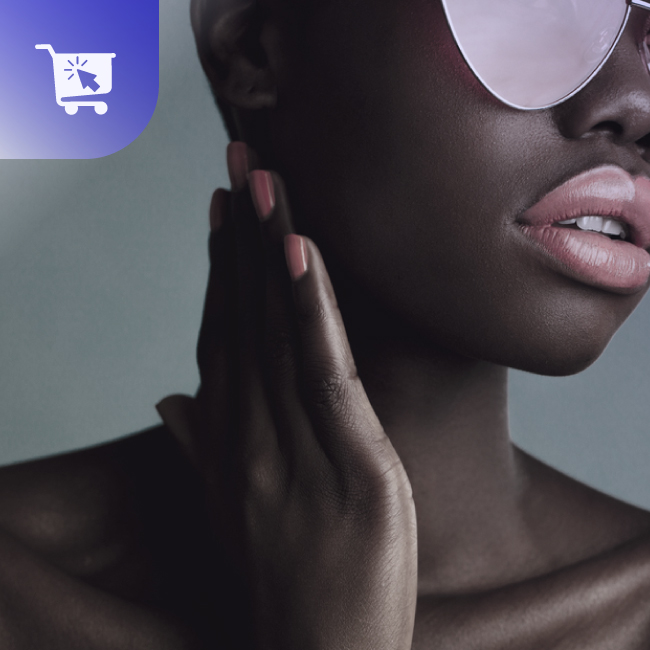
Kaleigh Moore Explores The Future Of Fashion Consumption
About this Podcast:
Kaleigh Moore is a freelance writer for e-commerce platforms and the SaaS tools that integrate with them. She’s written for major SaaS companies like AT&T, HubSpot, ReCharge Payments and BigCommerce. She has also written about retail trends in e-commerce for international publications like Forbes, Vogue Business and Adweek.
Episode Transcript:
Akshara Subramanian
Hello and welcome to a brand new episode of The Retail Podcast by Vue.ai, where we discuss everything that's moving and shaking the World of Retail. In today's episode, we have Kaleigh Moore, a freelance writer for e-commerce platforms and the SaaS tools that integrate with them. She's written for major SaaS companies like AT&T, HubSpot, ReCharge Payments, and BigCommerce. She's also written about retail trends in e-commerce for international publications like Forbes, Vogue Business, and Adweek. So without further ado, welcome Kaleigh. We're so thrilled to host you on our podcast.
Kaleigh Moore
Yeah, thanks for having me.
Akshara Subramanian
Fantastic. So, let's start a little bit with your journey as a freelance writer. What was it about the e-commerce and SaaS space that made them your niche?
Kaleigh Moore
So when I was in college, I had an e-commerce store of my own. I started it when I was 19 years old and it was really just an experiment in a way for me to make a little extra money while I was in college. And that experience eventually lent itself to a lot of different opportunities down the road, whether it was through being able to leverage that experience in writing or doing a little bit of social media consulting in the early days of my freelance work, that one experience and that kind of hands-on trial that I got to do with that e-commerce store of my own really opened a lot of doors. So, it's kind of how I naturally progressed into the e-commerce world as a freelance writer. When I was out of college, I worked in public relations for a non-profit for a little bit but was doing some freelancing on the side. And I eventually got to the point where I was doing pretty well with the freelance work and I was getting really busy. So I gave myself an 18-month window where I said, OK, I'm going to see if this freelance thing works and if not I'll find another full-time job. But yeah, that's kind of how it all started.
Akshara Subramanian
That's amazing. So, Kaleigh, we know that fashion tech education is a priority in 2020, and many international companies like Ralph and Russo, LVMH, and Kering have launched various programs and open schools to train people or for new design skills, whether 3D apparel design or focus on circular economy. So what are your thoughts on these initiatives and how do you think this is shaping the larger narrative of fashion tech?
Kaleigh Moore
I think it's good news. I think it's really exciting to see more companies, especially big companies like the ones you listed there who are getting really serious about, as you said, circular economy and just being more responsible when it comes to design and really leveraging technology to come up with smarter ways to create fashion pieces, whether that's through recycled materials or 3D printing or, you know, finding new ways to repurpose any kind of existing material. I think that that's a really important thing, because when you think about the statistics around fashion waste, I mean, it's incredible. And it's only getting worse. And it's been really exciting to see more conversations, especially over 2019, about getting away from the fast-fashion movement and really focusing on how we can use technology to do this better. And then the other side of that is, like you said, education. So how can we empower designers and consumers to be smarter about the fashion decisions that they make?
Akshara Subramanian
Right. And have you seen anything that's been really interesting that caught your eye or any brand that's done work around this?
Kaleigh Moore
I've seen a lot of really a lot of companies focusing on repurposing plastic this past year. That's really been a big theme. Everyone from Adidas to brands like Body Glove to I mean, there's so many really focusing, especially when it comes to swimwear and athletic materials. Finding new ways to repurpose those and to create whether they're polyester blends. I think that that's really great. I think the other side of the equation, though, is consumer education and consumer decision-making. So it's great to have technology fuelling all of these innovations when it comes to creating more sustainable products and more sustainable apparel pieces. But I think it's also a question of consumption, too. So, are consumers going to buy less and buy quality over than just the cheap and fast and easy option? So it's not a quick answer. That's the shortest version I can say. But I think I do think it's great to see more companies getting smart about how they're just rethinking the existing approach to design and apparel creation.
Akshara Subramanian
It's interesting you talked about all of these different ways in which companies are doing things around garments. And there's also been a lot of conversation recently about wearable tech and tech that's not only getting incorporated into apparel but also shaping the way garments are made. I think the Ministry of Supply, for example, has used cutting-edge tech to design fabric that's great for workwear. And then, you know, Lululemon also uses tech to design fabric that their signature leggings are made of. So, even though we see all of this happening on the manufacturing side, it's nearly not the same case on the e-commerce front. Do you think that's something that will change in 2020?
Kaleigh Moore
I think it's a little too soon to tell. I think as you said, it is really exciting to see companies like, Ministry of Supply who are incorporating tech like they have the jacket, for example, that heats up. Yeah, I love that. I think that that's such a smart way to integrate both function and, you know, wearable garments. So I think it is too soon to say. I think that honestly, I'm seeing a lot of companies and maybe this is very negative of me but I think it's really easy to tap into technology or sustainability messaging as a feel-good marketing ploy. Unfortunately, there's not always a lot of follow-through on those efforts. So that's what I'm kind of hoping for, I want to see more brands really deliver on the promises that they're making and if they are going to tout those things as marketing messages. I want more education, I want more transparency on how they're doing that. What's the execution like? Like, let us all be behind the scenes. I hope we see more of that.
Akshara Subramanian
Right. And, you know, other than Ministry of Supply, Lululemon, because you write so much around all of these different kinds of tech and fashion trends. Is there anything that's really been interesting in this space, as the wearable tech space?
Kaleigh Moore
That's a good question. As you said, I've written about so much over the past 10 months that it's really, really hard to keep track of it all. So nothing super top of mind right off the top of my head.
Akshara Subramanian
Ok, so Kaleigh, it's Fashion Month right now and we've been seeing some really interesting tech collaborations at major runway events. Even in the last couple of years, brands like Samsung, Apple, Google, and even Motorola have been doing some interesting stuff with fashion. And essentially, there's been such a shift from luxury car brands that usually collaborate for most of these events. Right? So do you think this is a sign of things to come? What are the other ways in which fashion and tech can collaborate?
Kaleigh Moore
I do. I think it's smart when it's done, not just like I said, as a gimmick. I think there has to be a lot of functionality to it. And I think it has to be practical, too, for the consumer. I think there's often a temptation to make something that looks really cool and get some headlines on the runway. But is it functional or is it something that a regular consumer or luxury consumer would actually use in their day-to-day life? So I think that that's the question now, you know, is it realistic? Is it something that's going to be integrated into consumer's day-to-day lives or is it more of an art piece for a runway show?
Akshara Subramanian
And one of the other trends I think that we've kind of been, you know, we've kind of been looking at a lot is inclusivity. So what are your thoughts on how different brands are taking up inclusivity, in their own way to talk about how they're diversifying, whether it's in terms of sizes or whether it's in terms of how visually they present, you know, their campaigns? What are your thoughts on that?
Kaleigh Moore
I think it's really important. I think as e-commerce becomes a larger percentage of retail purchases, it's I mean, it's growing every year, but that's going to become more and more important. And so I saw a really interesting example the other day from Fabletics, where they have a variety of models modelling the same product. So consumers who are shopping online can see what the product looks like in a variety of shapes and sizes, which is really, really important, especially when you can't see the product firsthand. And for something like activewear, that's really difficult and can vary a lot from brand to brand. I think that having something like that is an extremely valuable tool. And I hope that more brands, especially in e-commerce, will start to think about things like that. And how can we leverage inclusivity not only to make for more cohesive and more inclusive marketing messages but for functionality too? How can we make the shopping journey and experience easier for consumers by adding more elements and kind of widening the breadth and moving beyond just traditional models for product shots?
Akshara Subramanian
And it's kind of interesting because, you know. Vue.ai is also, we're also a company that works a lot with tech and we work a lot with retailers across the globe. And one of the biggest things that a lot of our customers have told us is that the biggest problem that their shoppers are facing is that they're not able to really visualize things in a way that's closest to what they would like. So, for example, whether it's just imagining how a pair of jeans would look on them or how a bag, you know, how proportionate a bag would look. There's no visualization tool for that and I think it's even more important in the inclusivity narrative because you can see different types of sizes, just able to see different types of fits. What do you think about these visualization tools that can help, you know, promote this messaging of inclusivity?
Kaleigh Moore
I think it's great. I think we need more of it. As you said, I think it would help a lot with the return issue as well for e-commerce brands, that's such an expensive aspect of business for any business that operates online. And so the more product context they can provide with visualizations, with AI, with any kind of simulation where the consumer can really get a good feel for what the product's going to look like on them, I think that's wonderful. If it's extremely personalized through, like you said, like a VR where or an AR where they can see it on themselves, that's great but if you don't maybe have the technology or the budget to invest in something like that, having something where like the Fabletics example, where you have a variety of shapes and sizes represented, it's a lot more realistic for the consumer and a lot more contextual, which I think is extremely valuable and like I said, could really cut down on the issue of the return.
Akshara Subramanian
That's really interesting that you bring up the issue of the return because that also takes us to another big trend, which is, you know, it's not really a trend anymore. It's actually a topic that everybody's always talking about. And it's also something that brands are taking very seriously, which is sustainability, right, and the circular economy. So multiple rental and resale companies are coming up trying to really focus on that second-hand market space getting consumers to use a lot less and waste a lot less. So what are your thoughts on that?
Kaleigh Moore
I think it's great. I'm personally someone who uses that a lot, especially like the Poshmark app where you can sell and buy used clothes. I've also been experimenting lately with like thredUp and a couple of others just kind of get a feel for what those are like. They're all a little bit different, but I think it's great. And I think the rental economy too. That's something I've also been experimenting with first hand. I think it's a really good option also because it's affordable too. I mean, you're not investing in these pieces, and especially if they're things you're only going to wear once or twice anyway. I think it's a really good option for consumers. And I think in 2020, we're going to see this continue to grow in popularity, especially as consumer mentality shifts a little bit, too, as far as kind of just access over ownership. I guess I think we're going to see more of that because there's less importance sent with owning the thing over just being able to wear it and have it and maybe get the photo for Instagram. You know, I think that that's realistic when you think about how consumers think today.
Akshara Subramanian
Yeah, that's really interesting. And you just said that you've actually tried and experimented with different kinds of apps. So have you purchased anything on say thredUp or maybe Rent the Runway or, you know, any other resale company? And can you tell us a little bit about what that experience itself felt like?
Kaleigh Moore
Yeah. So my favourite experience with rentals so far has been with Nuuly, which is Urban Outfitters, Anthropologie, a couple of different under that umbrella. But you get eight items for like eighty-nine dollars for a month for 30 days. And I really like the selection there and the items that they have available are the pretty high ticket. So you get a lot of value for what you're spending. So I was really happy with the experience with how quickly it was delivered, how quickly things just were available and the returns process was really simple. It was just a really good front to back experience. Poshmark is another good one that when it comes to resale I think has been really, really valuable. If I'm looking for a product, honestly, I will go to Poshmark first. One is because it's cheaper too. After all, it makes me feel like it's a smarter consumer decision to buy something that's already out there rather than requesting something brand new. So a lot of good options out there. And I think as these companies get smarter and get more customer data and feedback, they're only going to refine their processes and make these even stronger value ads and offerings for people who are interested in this.
Akshara Subramanian
That's really interesting and you know, when you were talking about your experience, it kind of makes me think a little bit about customer experience itself, in general, today with all these different types of retail experiences, you know, whether it's someone just going into a store or need to pick up the product and being online or whatever it is. And also, given that you write so much about it, can you tell me a little bit about what the customer of this day and age are looking for in a shopping experience?
Kaleigh Moore
I can tell you for a fact that customer experience expectations are at an all-time high. Everything I write about, that's almost always within the first paragraph. So expectations are high. So what's happening is when a consumer encounters a really stellar experience online, they are using that bar, that higher bar to measure everyone else. So if you are not delivering a top-notch experience, you are potentially losing customers to someone who's going to do it better than you. So I think that the entire customer journey across touchpoints, across channels has to be an ongoing fine-tuning process where you're always making it better. You're always using customer data, customer feedback to fix things, to make it better, to make it stronger. And there are not a lot of companies who have this right. But there are a few examples that I can think of. Glossier, of course, is one that really does a great job at this. Yeah. So it's like the traditional everybody points to that one. But I think that they are a really good used case where you can see how they've leaned into customer experience and customer support almost over everything else. I would say even more than the product and that's served them very well.
Akshara Subramanian
That's so interesting because I was having the same conversation with a colleague today. I think one of the strongest points for Glossier is just the way they've built that community of their customers and allow the whole customer community to kind of interact with each other. They don't look at it as a kind of just a product being sold to a customer type of experience. They look at it as a full-on beauty ecosystem that they're trying to build and then they feed all of that feedback into their product making process. And it's so evident that they're quite transparent about it. That's probably also what people are looking for in terms of experience these days.
Kaleigh Moore
I agree. Yeah, totally. I think you're right on the mark.
Akshara Subramanian
That's great. I'd actually like to come to the topic of AI It's a topic that's so big right now. It's supposed to be retail's biggest investment in 2020. Everyone's talking about AI Right. And we recently read something really interesting and it says, you know, this decade is less about AI replacing humans and more about AI human collaboration. What do you think of this AI human collaboration, specifically in e-commerce? And what are how you think A.I can assist or enable retail professionals to do their jobs better?Kaleigh Moore
Yeah, I think there's so much opportunity. And I think we're really just at the beginning of where this could go from everything to synthesising customer data to deliver extreme personalization and relevancy for customers to, you know, things we talked about like simulations, product simulations or really interesting in-store experiences where you're leveraging technology to help consumers have a better in-store experience or online. There are so many different ways that this can take shape. And I think that, again, as long as functionality and customer feedback is at the core of these efforts and they're really what's driving how AI is being leveraged, there's so much potential here. And I think that, again, with customer experience being so important for consumers today, brands who are starting now to get on board with AI and figure out how can we integrate this into our existing processes, how can we improve things by using it smartly? What do our customers need from us that maybe this can serve? They're gonna be ahead of everybody else, because like I said, we're just at the beginning. There's so much room to grow.
Akshara Subramanian
And I think, you know, this whole topic, AI also brings me to that whole point that we talked about, which is just being able to create really personalized experiences for customers. Right. So a recent article I think I had read on Vogue business says that investors would look to B2B startups that provide behind-the-scenes technologies for customer service, you know, logistics and other areas of growth. So talk to us about how technology provided by B2B startups can help large scale retailers boost all of these personalization services.
Kaleigh Moore
Yeah, there are a lot of different ways that can go, but I think the big thing is with so much data that especially e-commerce companies have available to them today, you have to be able to use that data in the right way and to make sense of it and to get it to the right people on your team for it to be useful to you. Right.
Akshara Subramanian
Absolutely.
Kaleigh Moore
So I can really assist with that and take a lot of the legwork out of it. I think that that's a huge advantage. I think that when it comes to marketing efforts and sales, we talked about personalization. AI has a huge component there especially in a B2B context, again, this can take so many different shapes and forms. I don't really have enough time to get into that, but I think that there's just a lot of opportunity there. And again, it's about how we can get the right information to the right people so we can better serve our customers. And I think that AI can help with a lot of that.
Akshara Subramanian
That's fantastic. That's actually a pretty great kind of idea around what AI can do for retail and B2B companies. So Kaleigh, finally to finish off with our podcast. If you were to condense our conversation into, say, the top three fashion tech trends of 2020, what would they be?
Kaleigh Moore
I think the circular economy is a big one. So finding ways to use technology to make and design smarter, more eco-friendly products. That's a big one. AI for better personalization. That's one we just talked about. And number three, I think just technology in general, as is how we can use technology to improve the customer experience overall because that is really the next competitive forefront for both online and offline retailers.
Akshara Subramanian
All right, great. Thank you so much for joining us on our podcast, Kaleigh. We really enjoyed having you. Thank you.
Kaleigh Moore
Thanks so much.
Akshara Subramanian
If you'd like to find out more about Retail, Technology and AI subscribe to our podcast at Vue.ai/podcast, thank you for joining.
Meet your speakers:
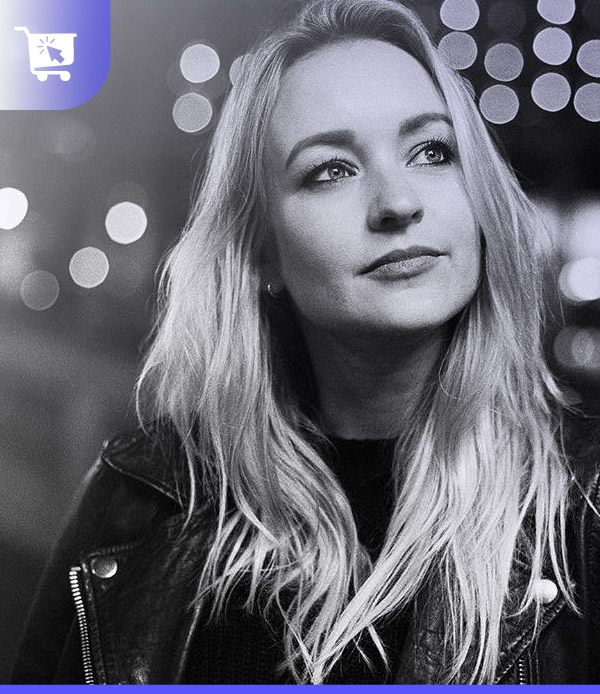
Kaleigh Moore
Writer, SaaS & eCommerce

Akshara Subramanian
Director, Customer Marketing, Vue.ai


